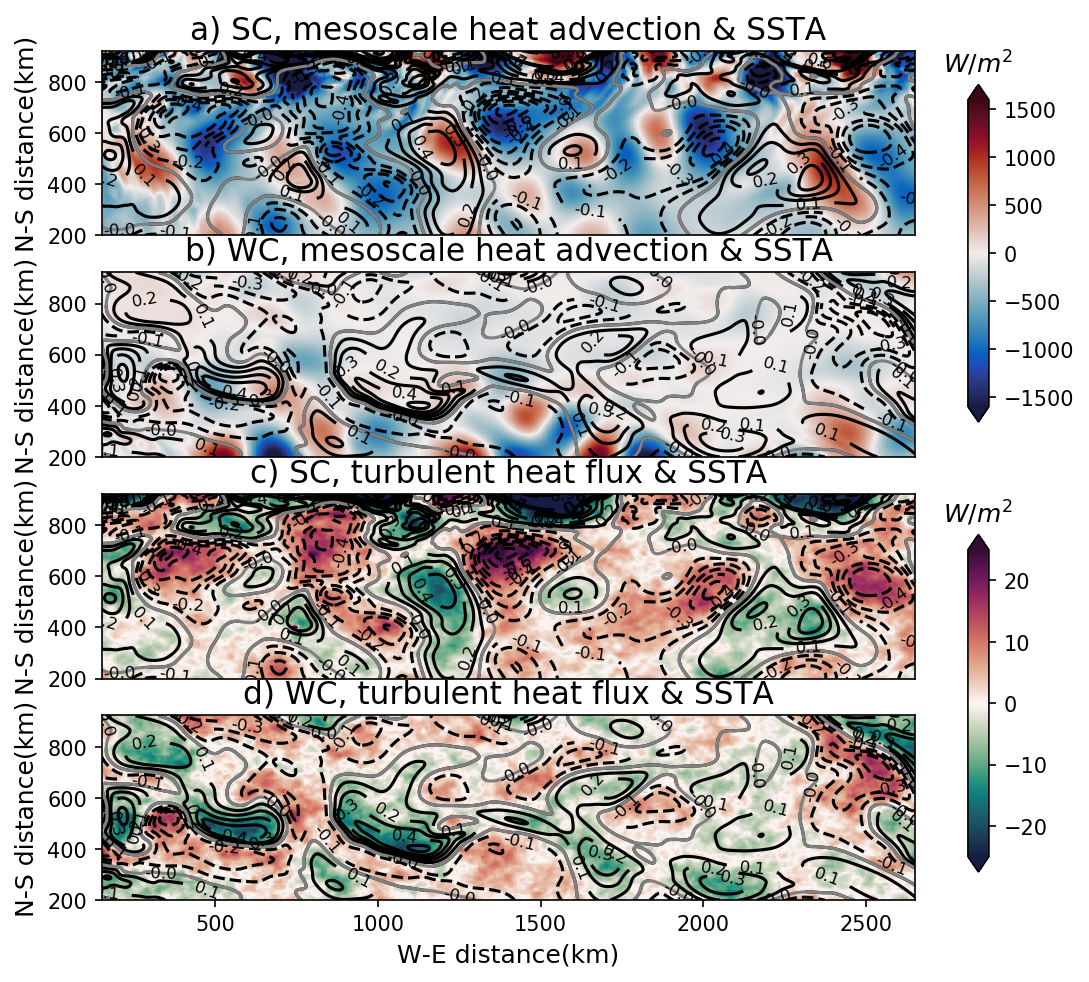The Southern Ocean plays a pivotal role in our planet’s climate, as it helps regulate the exchange of heat, freshwater, and gases like oxygen and carbon dioxide between the atmosphere and ocean. Understanding the processes that control the heat exchange in the Southern Ocean is essential for improving climate models and predicting future changes. In our recent study, we delved into the relationship between ocean currents and heat exchange to gain insight into this complex and fascinating system. We used a high-resolution computer model to analyze two distinct regions in the Southern Ocean: one with strong ocean currents and another with weak ocean currents. Our findings revealed that ocean currents have a significant influence on creating variations in sea surface temperatures. Interestingly, atmospheric heat exchange acts to reduce these variations, creating a delicate balance between the two forces.
The connection between ocean currents and surface temperature variations is influenced by several factors, including the size of the area studied, the strength of the currents, and the mixed layer depth (MLD). We observed a positive correlation between ocean currents and temperature anomalies at the mesoscale level, particularly when currents are strong overall.
For larger-scale zonal anomalies, heat advection within the mixed layer determines the heating or cooling of the layer. However, the sea surface temperature anomalies tend to be larger in size than the advection, and the spatial correlation between these two fields is weak. We also found that the effects of atmospheric forcing on the ocean are modulated by the MLD variability.

In this study, we investigated the impact of ocean currents on heat exchange between the atmosphere and the ocean within the Southern Ocean. By employing a high-resolution computer model, we analyzed two distinct regions - one characterized by strong ocean currents and another by weak ocean currents. Our findings indicate that ocean currents play a crucial role in creating variations in sea surface temperatures. However, the heat exchange with the atmosphere acts to reduce these variations.
We found that the relationship between ocean currents and surface temperature variations is influenced by several factors, including the size of the area being studied, the strength of the currents, and the mixed layer depth (MLD). At the mesoscale level, there is a positive correlation between ocean currents and temperature anomalies, especially when the currents are strong overall. In the case of larger-scale zonal anomalies, the heat advection within the mixed layer determines the heating or cooling of the layer, while the sea surface temperature anomalies tend to be larger in size than the advection, and the spatial correlation between these two fields is weak. The effects of atmospheric forcing on the ocean are modulated by the MLD variability.
Our study highlights the links between heat advection, sea surface temperature anomalies, and air-sea heat fluxes at ocean mesoscales, emphasizing the overall dominance of intrinsic oceanic variability in mesoscale air-sea heat exchange in the Southern Ocean.